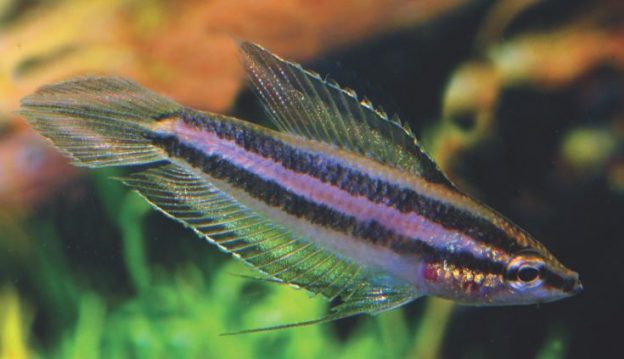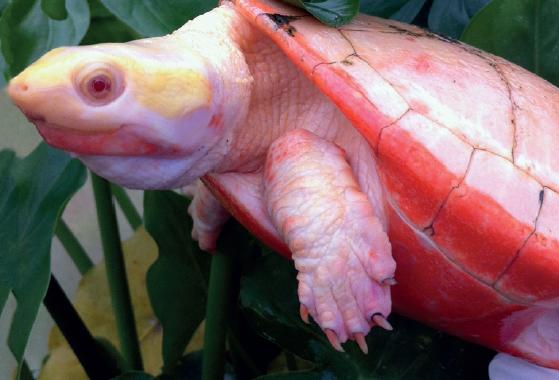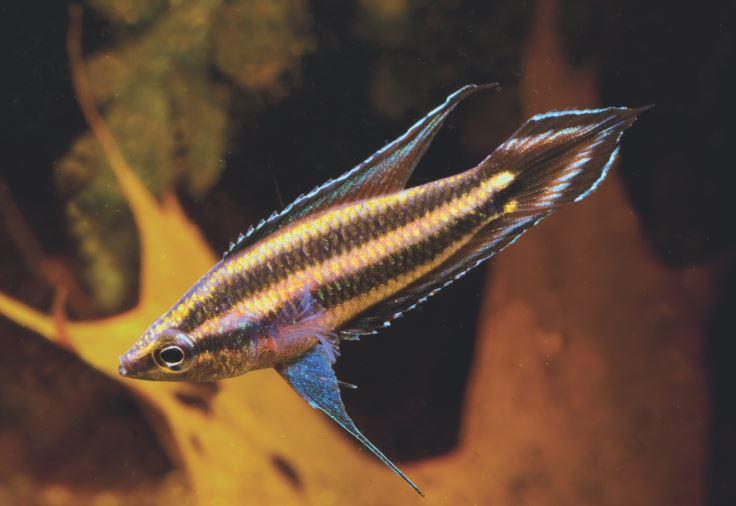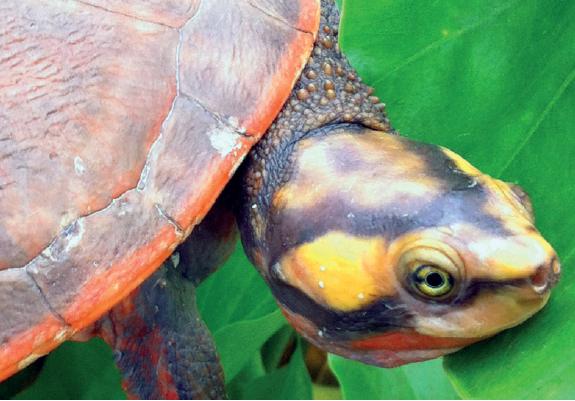
The licorice gouramis (Parosphromenus) belong to the labyrinthfishes. Until the 1980s only three scientifically described species were known; nowadays, mainly thanks to the hard work of the labyrinthfish associations – the IGL (Internationale GemeinschaftfürLabyrinthfische), the AAGB (Anabantoid Association of Great Britain), the AK Labyrinthfische im VDA, and the EAC (European Anabantoid Club) – the number of scientifically described species has increased to 20, and a number of others are already known in the hobby but not yet scientifically examined.
None of theParosphromenusspecies grows larger than 4-5 cm. They are thus true dwarf fishes that should also be kept in correspondingly small aquaria. The maintenance of licorice gouramis does, however, require a degree of effort, as these fishes require live food for their long-term diet. Freshly-hatchedArtemianauplii have proved ideal as a staple food, and can be supplemented with Grindal Worms,Tubifex, small water fleas (especiallyMoina), copepods (includingCyclops), small mosquito larvae, etc, depending on what the pond has to offer at any given time. In the wild these dwarf fishes are adapted to life-hostile waters that are extremely poor in minerals and have a low pH value. They don’t in fact require such water conditions for maintenance, but undoubtedly do for breeding. When licorice gouramis aren’t in spawning mood they look rather boring and don’t exhibit any interesting behavior either. On the other hand, specimens kept in suitable water are constantly courting and willalso breed year-round. In such circumstances the males of almost all species are breathtakingly beautiful. For this reasonParosphromenusshould normally be kept with near-natural water parameters, that is practically distilled water (0-2 °dGH) at a pH of 4.5 – 5.5. Interestingly these dwarf forms are significantly longer-lived than their larger cousins, and you can usually reckon on enjoying them for 5-6 years. Specialists have somewhat differing views as regards the correct water temperature. Some swear by temperatures of around 22 °C (room temperature), while others prefer temperatures 2-3 °C higher (at least for breeding).
Threatened with extinction
Licorice gouramis are usually exceptionally common where they occur. They can almost be compared with picking mushrooms – once you’ve found one then you will find even more. For this reason the (in any case comparatively limited) collecting of wild individuals for the aquarium represents no threat to these fishes. But the natural habitats of these dainty little fishes, namely the small blackwater streams that trickle from the peat bogs and jungles, are being destroyed at an alarming rate. As a result not only licorice gouramis but also entire communities of animals and plants are in serious danger. Where just a few years ago there was still unspoiled nature there are now endless expanses of oil-palm plantations. The chemical composition of the water in the streams changes so much in such plantations that blackwater fishes can no longer survive there. There is a dedicated conservation breeding program for licorice gouramis, popularly known to enthusiasts as “Paros” for short, and you can learn more about this at http://parosphromenus-project.org. Here you will also find further detailed hints on maintenance and breeding, as well as a lot of additional interesting information.

The phantom
The best-known – at least as far as the name is concerned – Paro species isP. deissneri, which was described back in 1859 by Pieter Bleeker and is also the type species of the genus. In 1974 leading aquarist Walter Foersch from Munich published his many years of experience with a Paro that he believed to beP. deissneriat the time. His trail-blazing observations first made the Paro hobby more widely possible, and thanks to his photos and those of Hans-Joachim RichterP. deissneriwas elevated to the position of the dream fish ofall labyrinthfish fans. But we now know that the species being maintained back then was eitherP. tweediei orP. rubrimontis, both first scientifically described in 2005 (or a very similar species, as the fishes imported back then can’t be identified with certainty retrospectively, they originated from Ayer Hitam). The “real”P. deissneriis a not quite so colorful species and has a prolonged, lanceolate, pointed tail. The speciesParosphromenusdeissneriisn’t at present available in the hobby, although practically all the licorice gouramis that turn up in the trade are labeled “Parosphromenus deissneri“, because the various species can be determined only with difficulty when not in courtship dress, and non-specialists among aquarists, if familiar withParosphromenusat all, have the beautiful fishes from the Foersch and Richter photos in their mind’s eyes. The species occurs only on the island of Bangka, from where there are at present no commercial imports. The Paro fans involved in conservation breeding would be only too happy to take the species under their wings.
False alarm
The majority of licorice gourami species have a round caudal fin. In mid November 2012 Aquarium Glaser imported a number of licorice gouramis in which the males had a lanceolate caudal fin. Unfortunately licorice gouramis can only be identified for certain when the male is in courtship coloration. But there was much to suggest that the new imports might be the legendaryParosphromenus deissneri.The word spread and the Paro specialists were eager to see the fishes. But it wasn’t very long before a number of males were in full color, and now it could be seen that they weren’tP. deissneriat all, but a species very close toP.filamentosus. At around the same time the eagerly-awaited collecting locality information finally arrived from the exporter. According to him the fishes originated from south-east Kalimantan (Borneo), where they can be found from Ampah to Muarateweh. The newParosphromenusis now provisionally named after the first of these locations:

Parosphromenussp. “Ampah”
Despite the very short time that these fishes have been swimming in our aquaria, they have already been bred successfully. As in practically all licorice gouramis, the sexes can be told apart fairly easily, as the caudal fin is always completely colorless in females. It is still totally unclear whetherP.sp. “Ampah” is a local variant ofP. filamentosusor a distinct species. Paros don’t make such distinctions easy. But – from an aquarium hobby viewpoint – the question is academic and of secondary importance, as in both cases, regardless of whether the fishes represent a particular population or a separate species, they should be bred true to type. Now, if we manage to breed such fishes true for successive generations then the knowledge thus obtained will help towards a better understanding of the natural history of licorice gouramis. And that is, after all, what the aquarium hobby is all about – obtaining information and increasing our knowledge!

Anzeige






